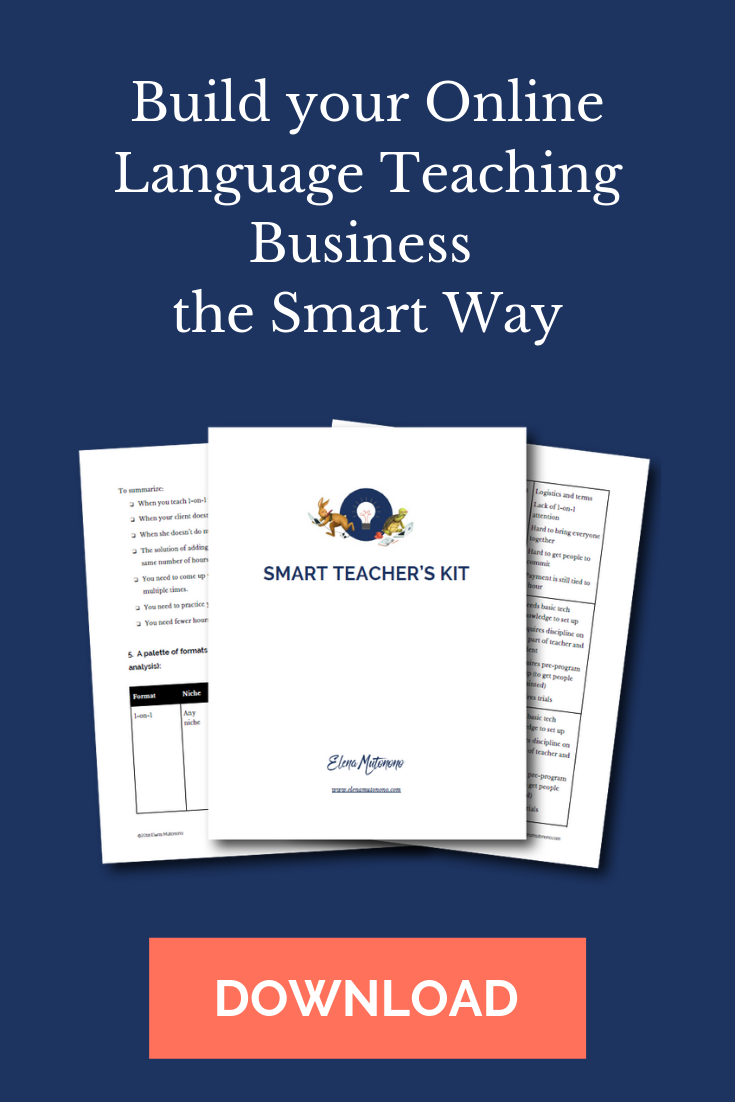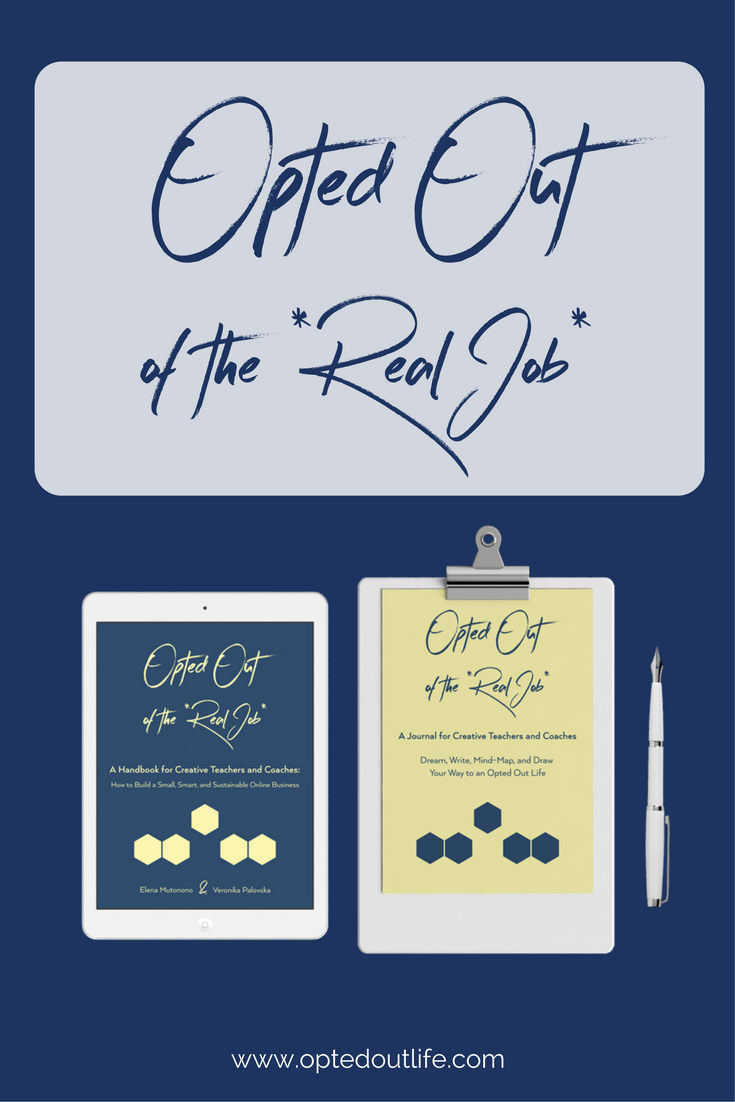Remember the first time you spoke a foreign language? When all the hours of practice and drills are finally paying off? That first time when random words are a sentence and what used to sound like a gargle is now a piece of information? That first time is intoxicating because it opens up the possibilities you never thought existed.
That’s how I felt. Obviously I didn’t stay there otherwise none of this would be here. That first real language experience is like a necessary rush of adrenaline at the end of a long and tedious fill-in-the-gap Grammar drills marathon. It pushes you forward. But it’s not the end of the journey.
When it comes to selling products or services online your first sale serves the same purpose. Your horizons open and suddenly you have faith and confidence that you can do more than 1:1 lessons, that you can scale, that some people really love and treasure what you do.
What I discovered though is it’s easy to stay in that first-sale mode and feel like you’ve achieved your goal already. It’s easy to think that if you just work a bit harder you can get more sales, bring them in more consistently, and in the end they’ll come in automatically.
And yet consistent sales are a challenge. In this post I’ll dive into the difference between the first and the ongoing sales, what needs to happen before them and how to ensure that sales continue in the future.
Why is selling online the first time relatively easy?
If you have a database of clients, if your services are excellent and you’ve earned trust among your subscribers your first sale isn’t going to be difficult. In fact, you can sell anything without a “big blown-up launch” if you keep in touch with your clients and customers or engaged email subscribers.
Why? Your past or current clients have already bought from you so technically if you offer to them something they want in a convenient format at a price they’re ready to pay (which by the way doesn’t mean “cheap”) they will buy.
The other category are your most engaged subscribers. They’ve already been consuming your free content, and offering them something new, exciting and useful is a sure way to turn them into customers.
What happens next?
Say a few clients enrolled into your program, you ran it for a month, you got mostly good feedback, and now you want to repeat it. What typically happens is you gather your testimonials, update your sales page and repeat the steps you’d taken in your first launch.
The steps are often taken from some prominent marketer who has hundreds of people joining his list every day, which probably isn’t the case with you. You are a one-person operation and often while you’re “on the job” other important parts of your job get neglected, one of them is to prepare a new group of people to join the next round of your program.
So you repeat the steps and “launch” to almost the same audience (same size, same people). You work twice as hard and instead of the numbers you’d expected this time you have even fewer people. Selling online becomes an exhausting chore.
How can this be?
- You’ve worked hard
- You’ve created an amazing course
- You have all the testimonials
But why no clients? We get impatient, we try out desperate solutions like another webinar or another online course, we run Facebook ads and in the end we lose a lot more time and money, with no return. At this point everything is exhausting and you’re about to quit.
Here are a few tips on how to launch for a second time:
#1: Go back to the very beginning to gain more confidence.
You’re not the same after your first course launch, and even though the materials of your program/course will remain the same the way you sell them has to be different. To convince new people you cannot ride on the familiarity factor when people pay you just because they paid you before — you have to really understand your brand, your work and be able to say it without flinching.
Going back to your core message, your niche and the why behind your program isn’t a waste of time. The clearer you are about your message the more powerful it will come across. Then you no longer have to use the “repeat-seven-times” gimmick. You will say something once but will say it as someone who speaks from the place of power.
For me the most effective way to gain that power is to work with a coach. In my experience it’s someone who understands the nature of my work and is able to help me find my way through doubt and fears. When someone speaks my message back to me and rephrases it in a different way, it becomes easier for me to communicate it to others who may not understand.
If you need help consider joining our Smart Teacher’s Library for coaching, accountability, monthly challenges and peer support.
'Successful sales are a by-product of growing and nurturing an authentic online community.' ~ Elena MutononoClick To Tweet
#2: Build new connections
To keep selling online products and services we have to make it our priority to connect with people and create space for them to get to know us. This is where it gets tricky because we tend to want for people to find us. We want them to do all the hard work of googling, fishing out our brand-new website from the myriad of others, looking through what we have to offer and form a line.
When we realize that in the myriad of choices our website doesn’t come up first, then we get sidetracked with things like SEO, google ads and other things that are supposed to give us a “quick fix” and “guarantee” more sales.
But what we need is simple and basic — reach out to people, respond to their questions, lead with generosity. And no, I can’t tell you how much generosity is enough because the moment we begin to measure it, it ceases to be generous. I talked more about this on the Langpreneur podcast.
So be generous and connect. Here’re a few ways:
- Respond to emails/comments of people who reach out to you (other than spammers). Ask questions to keep the conversation going. People may not respond, and that’s OK.
- Engage on social media. Keep in mind that less is better. A couple of meaningful connections a week will yield more than 250 random likes.
- Run free events without sales pitches. Sometimes we do free events and invite people into a paid course, and it’s OK. But not every free event has to be that way.
- Meet with people for virtual coffee 1:1. Do chat sessions. Write cards — here’s the service I use.
***
Ready to plan your next launch? Check out my mini-course.
#3: Map out your ideal client’s journey
One of the issues that you’ll run into after your first sale is you’ll be too consumed with the feedback on the current course. You’ll want to improve it, clean up the sales page and perhaps collect testimonials. But another helpful thing is to meet with your clients and ask them to jog their memory and to tell you how they first heard about you, what reservations they had, what doubts and what helped them overcome those.
This exercise helps you recreate a map of your client’s journey because buying anything isn’t just a matter of “having money” as I used to think back in the day. It’s about helping them overcome a number of obstacles, doubts and fears that keep them in the place where they are.
Once you understand what those obstacles were you can begin addressing them:
- On social media
- On your blog/video channel/podcast
- In your newsletter
- On your website
- Through your products/programs
What also helps is becoming more approachable and less “teachery.” Depending on your background, this feels appalling, we feel like we’re betraying ourselves when we bring in a bit of our “daily lives” into our “work,” but the reality is just the opposite.
There’s a greater sense of connecting when we let ourselves be seen for who we are, not who we think we should be, as Brene Brown pointed out in her talk. Such vulnerability builds connections and begins generating sales for you way before you put up a “buy now” button.
As I finish this off, I wanted to remind you that just like any other skill, sales is something that takes years to practice and perfect. We have no issues practicing a new language, a musical instrument or our art. And yet when it comes to selling online we somehow think that a quick course or a 6-bullet-proven blueprint will somehow make us “fluent” overnight. Let’s keep this perspective as we strive towards working smarter.
What are your thoughts on sales?
The post was updated in April, 2021.

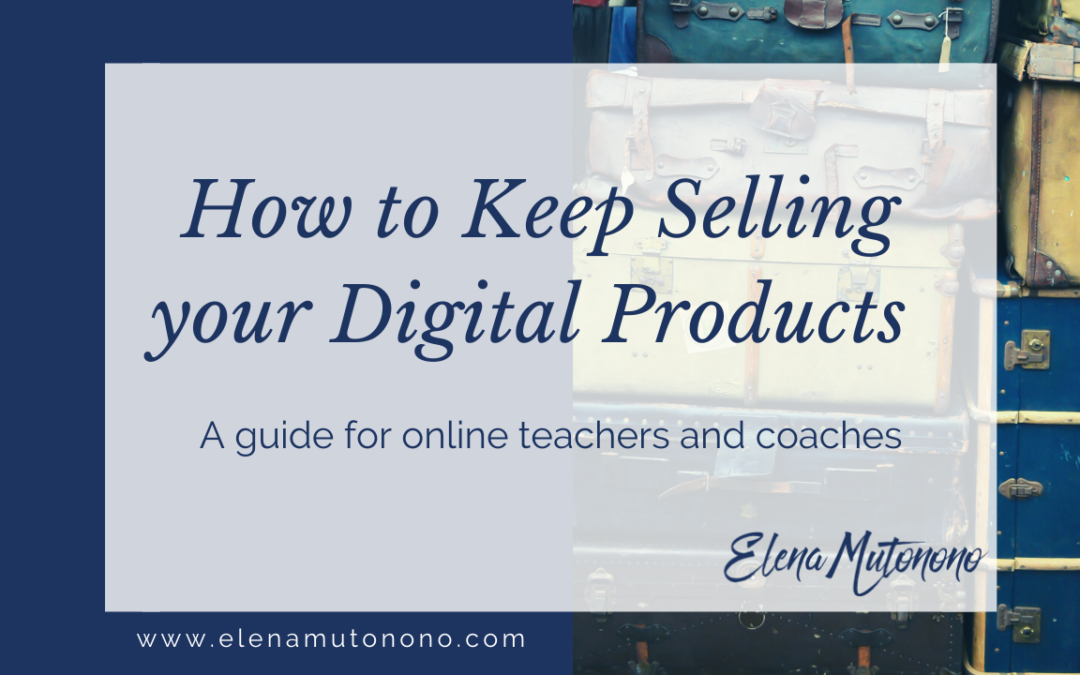
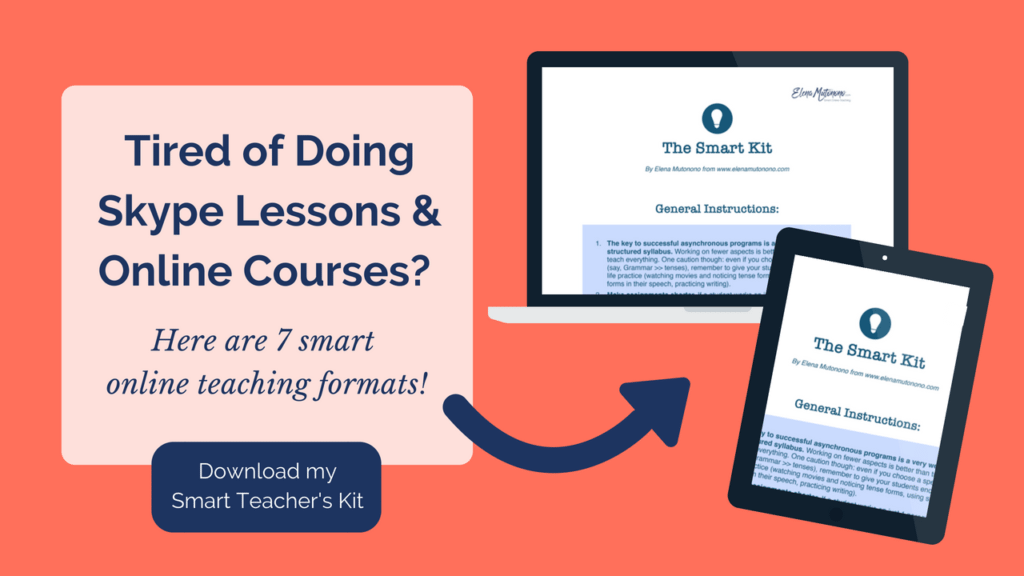
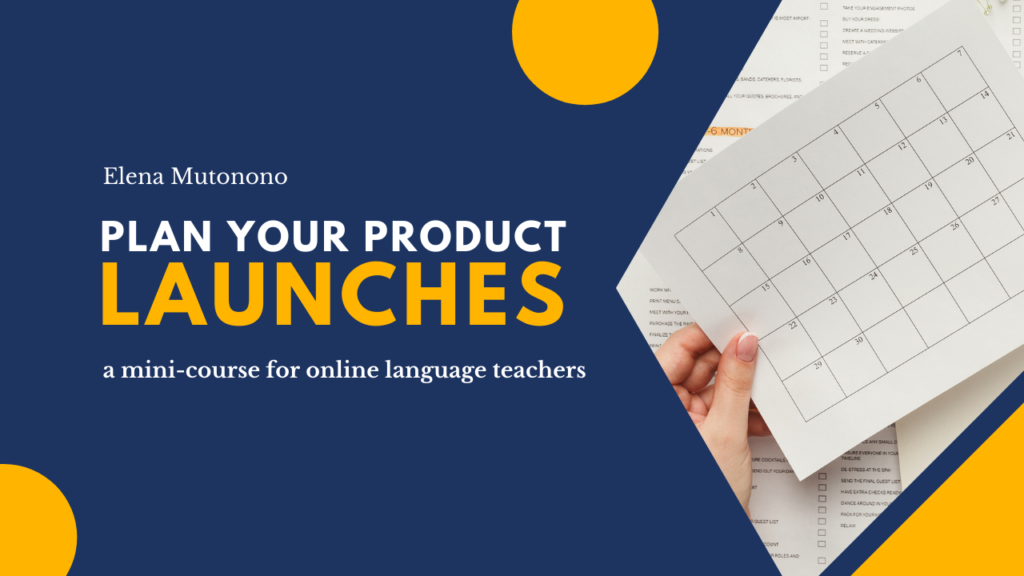
 Welcome to my nook where *Big Magic* happens. My name is Elena Mutonono, I help small business owners package their services as digital products and sell them online. I want you to work smarter, not harder. Increase your impact beyond your current face-to-face clients. Grow your business as you reach more people all over the world.
Welcome to my nook where *Big Magic* happens. My name is Elena Mutonono, I help small business owners package their services as digital products and sell them online. I want you to work smarter, not harder. Increase your impact beyond your current face-to-face clients. Grow your business as you reach more people all over the world.
